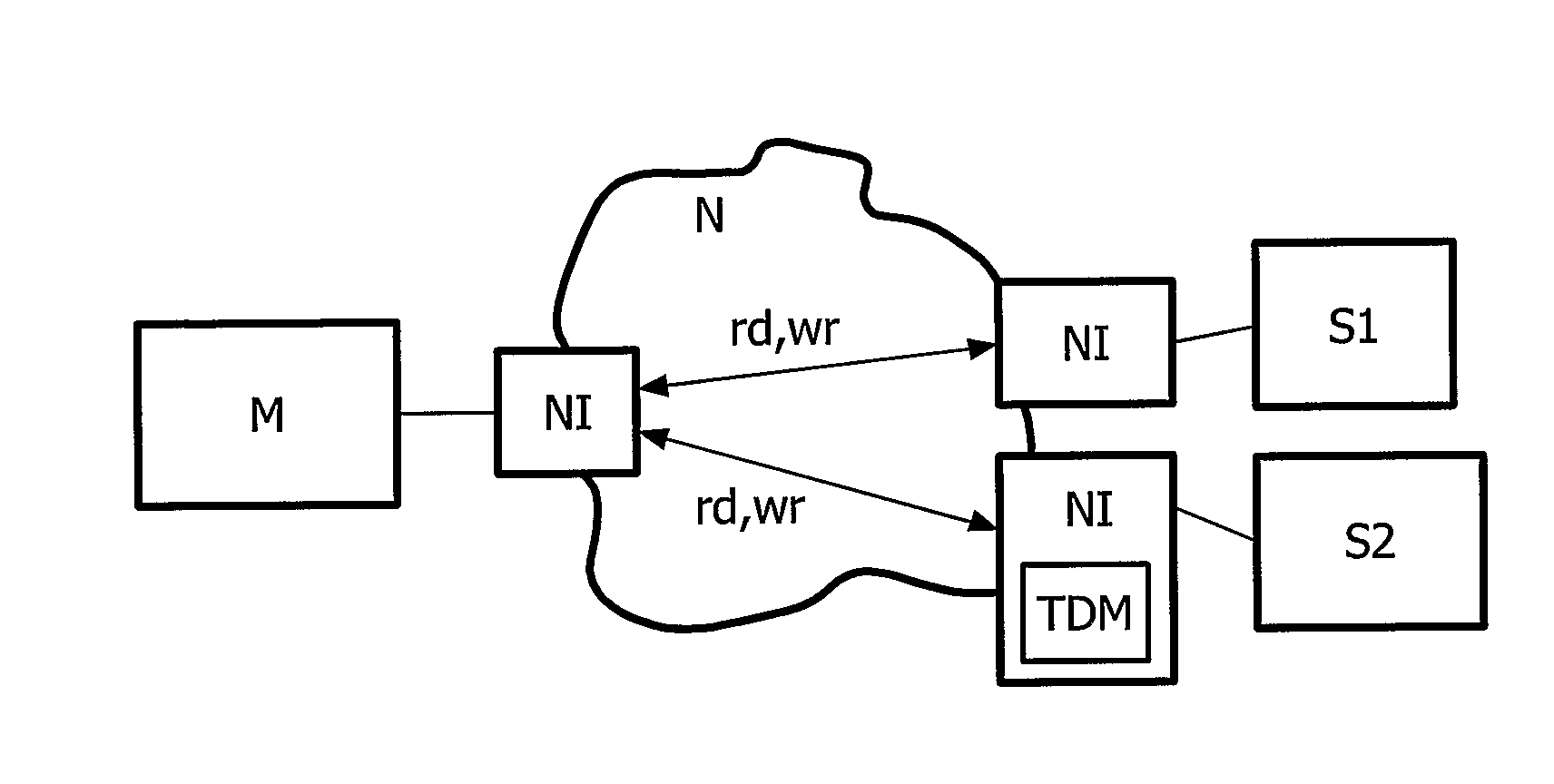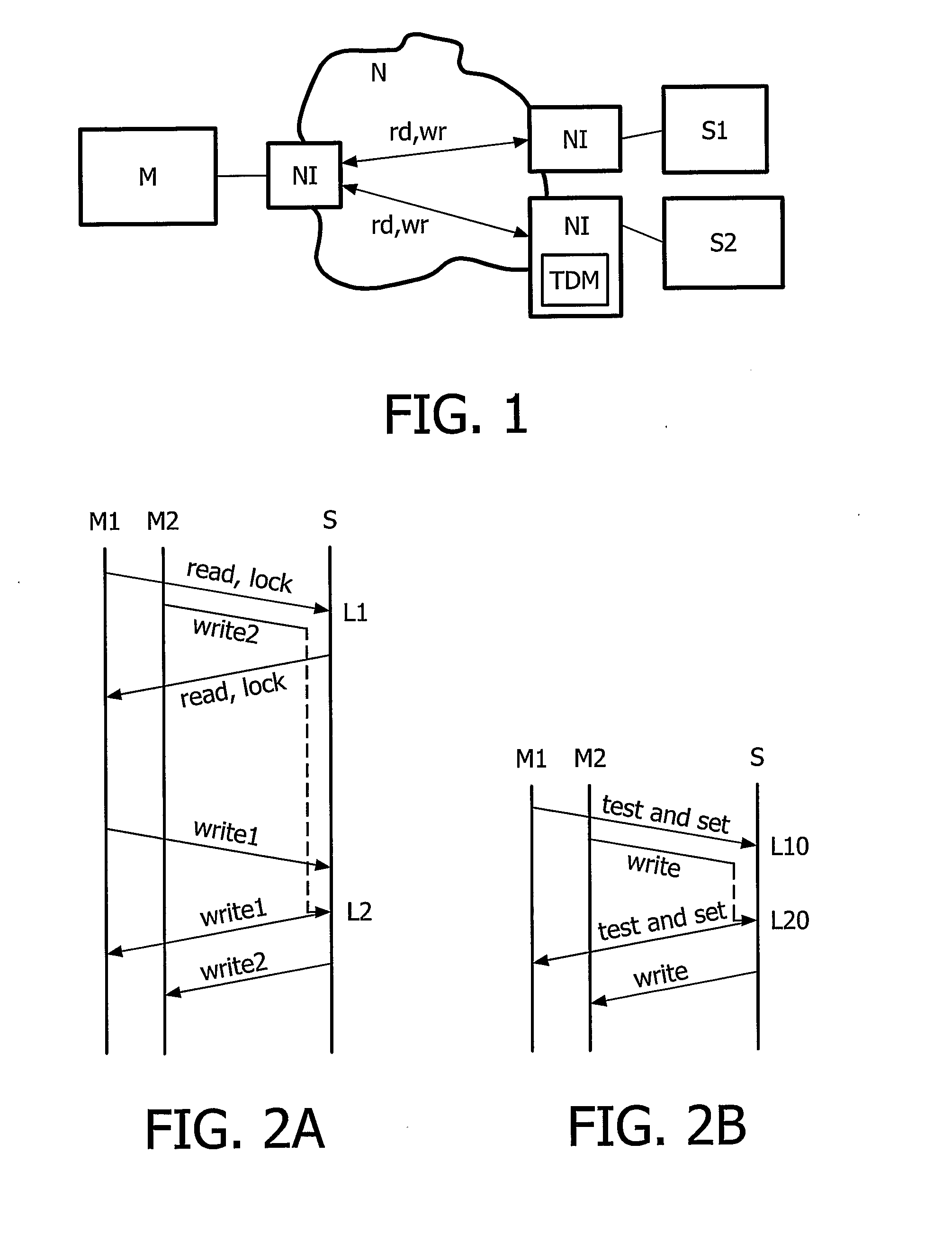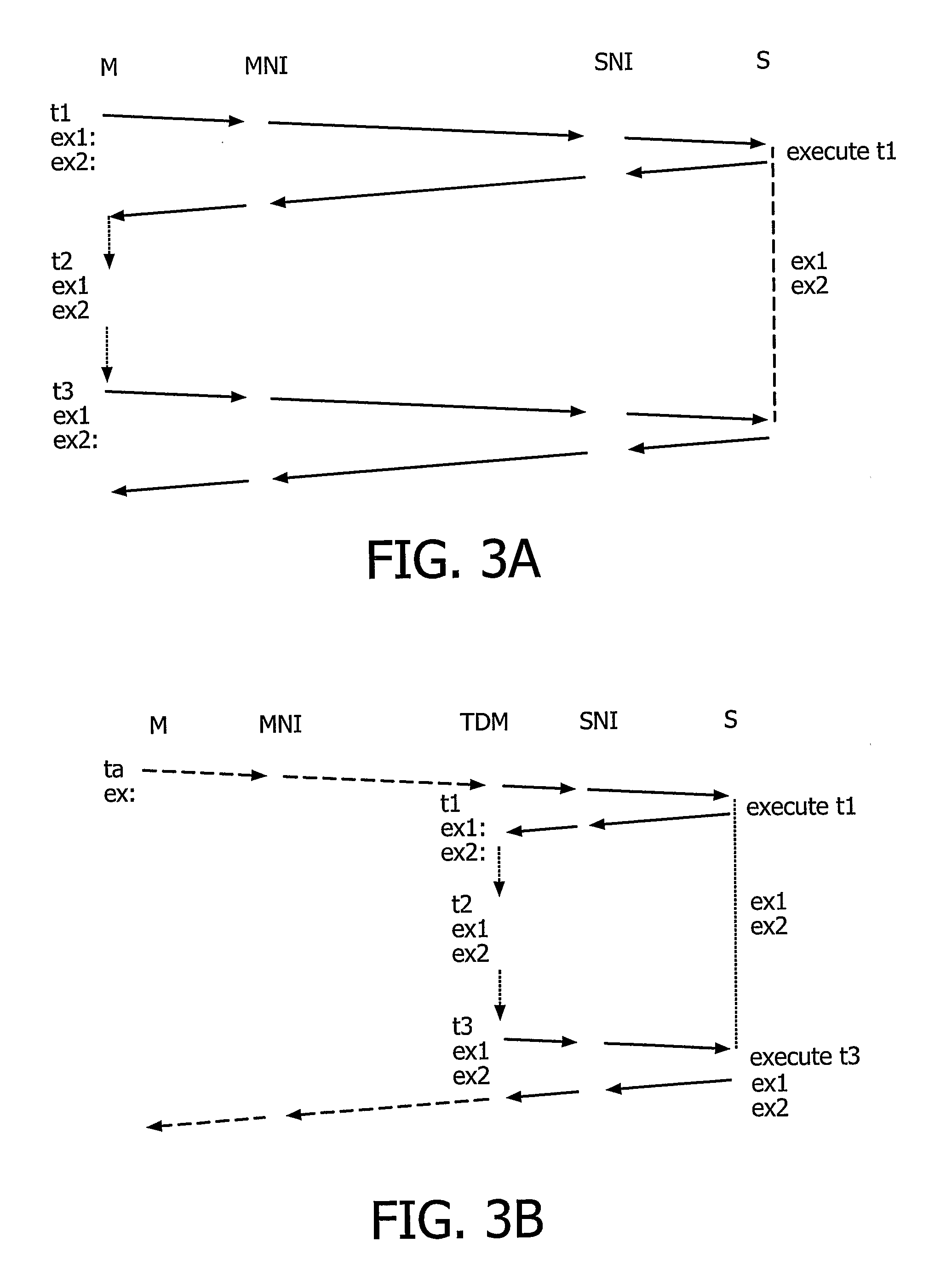Integrated Circuit and Metod for Issuing Transactions
a technology of integrated circuits and transactions, applied in the field of integrated circuits, can solve the problems of large number of modules forming a large bus load, system complexity on silicon shows a continuous increase in complexity, and achieve the effect of reducing the time a resource is locked
- Summary
- Abstract
- Description
- Claims
- Application Information
AI Technical Summary
Benefits of technology
Problems solved by technology
Method used
Image
Examples
first embodiment
[0042] An implementation thereof is illustrated in FIGS. 2A and 2B. A traditional atomic operation using locking is shown in FIG. 2A, and the atomic operation is shown in FIG. 2B.
[0043] Therefore, FIG. 2A shows a basic representation of a communication scheme between a first and second master M1, M2 and a slave S within a network on chip environment. The first master M1 requests a ‘read & lock’ operation, i.e. read a value in the slave S and lock the slave S, and the slave S returns a response ‘read & lock’, possibly returning a read value. The slave S is then locked (L1) to the master M1 so that a request ‘write2’ from the second master M2 is blocked, i.e. its execution is delayed. After the master M1 received the response ‘read & lock’ from the slave S, it issues a request ‘write1’ to the slave S in order to write a value into the slave S. This second request from the master M1 is received by the slave S and a response ‘write1’ is forwarded to the master M1 and the locking of the...
second embodiment
[0050] In FIG. 3B a basic representation of a communication scheme between a master M and a slave S within a network on chip environment is shown according to the The basic structure of the underlying network on chip environment corresponds to the environment as described in FIG. 3A, however a transaction decoding means TDM is additionally included into the network on chip environment. The master M issues an atomic transaction ta like a TestAndSet which is forwarded to the transaction decoding means TDM via the network interface MNI of the master M.
[0051] As described according to FIG. 3A two different execution examples for implementations or decoding of the atomic transaction ta of a TestAndSet command are described, namely LockedRead and Write as first execution example ex1 and ReadLinked and WriteConditional as second execution example ex2.
[0052] Here, the master M issues an atomic transaction ta. The decoding of the atomic transaction ta and the processing of first, second an...
PUM
 Login to View More
Login to View More Abstract
Description
Claims
Application Information
 Login to View More
Login to View More - R&D
- Intellectual Property
- Life Sciences
- Materials
- Tech Scout
- Unparalleled Data Quality
- Higher Quality Content
- 60% Fewer Hallucinations
Browse by: Latest US Patents, China's latest patents, Technical Efficacy Thesaurus, Application Domain, Technology Topic, Popular Technical Reports.
© 2025 PatSnap. All rights reserved.Legal|Privacy policy|Modern Slavery Act Transparency Statement|Sitemap|About US| Contact US: help@patsnap.com



